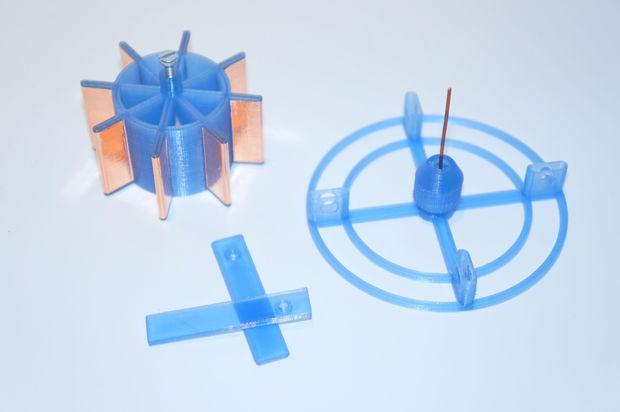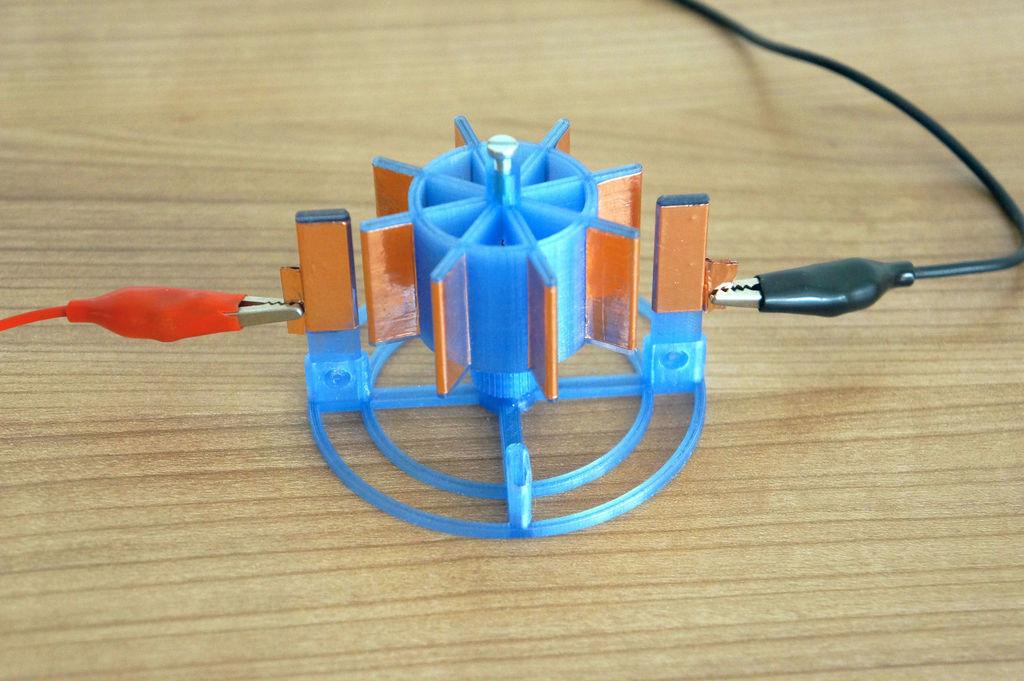As the quest to develop alternative and renewable energy sources continues, one of the promising options that has emerged–or reemerged, actually–is power generated by electrostatic motors. Instructables contributor “Joehan” submitted a design for a 3D printed electrostatic motor that’s easy to construct.
What’s an “electrostatic motor,” you ask? An electrostatic motor (also known as a “capacitor motor”) works differently than the conventional electric motor. The latter operates via the interaction between the motor’s magnetic field and winding currents to generate force within the motor. An electrostatic motor, in contrast, uses the same force that holds your clothes together when you pull them from the dryer–the attraction and repulsion of an electric charge–to generate energy. Since they don’t require magnets or copper windings or rare earth minerals, electrostatic motors are cheaper to build. Additionally, since the motor doesn’t use bearings or brushes, friction and, therefore, energy loss are minimal. The amount of energy generated isn’t that large (typically less than 100V) but it is steady.
Electrostatic motors–popular science fair projects but not widely employed–see use in microelectromechanical systems (MEMS) or very small devices, including nanotechnology. However, promising advances are being made in the further development of this technology and it is thought that it might first be put to more extensive use in wind turbine generators.
Electrostatic motors aren’t new. In fact, some early ones were developed by Andrew Gordon and Benjamin Franklin back in the mid-1700s. You can actually build an electrostatic motor from standard household items, as this Instructable demonstrates.
To construct your own 3D printed electrostatic motor, you’ll need the following materials, according to Joehan:
- 1x 3mm screw about 10mm long (for instance, an unused screw from an old PC)
- 1x 50mm wire (0.5-1mm)
- 1x aluminum foil or copper foil (such as self-adhesive aluminum tape for sealing or plain foil to glue)
- 1x HV power source (Wimshurst, Van-de-Graaff, Flyback Transformers)
- 3D printer and filament
The .stl files are available for download to print at home or via 3D Hubs or another supplier. You will print with 100% infill on standard printer settings and no support is required. The instructions are very simple and straightforward–although clearly you’re working with electricity, so if you’re not familiar with how an electrostatic motor works, you should prepare for this project by doing some precautionary research.
Joehan didn’t indicate to what purpose this device would be used, so we hope to hear more about this project and a prior one, a single-disc electrostatic generator. Perhaps this is one of those science fair type projects in which you build the thing so you can demonstrate how the process works and that certainly has its own rewards!
Let us know if you think this might be handy in a science fair or another more advanced use in the 3D Printed Electrostatic Motor forum thread over at 3DPB.com.
Subscribe to Our Email Newsletter
Stay up-to-date on all the latest news from the 3D printing industry and receive information and offers from third party vendors.
You May Also Like
NSF Awards Kentucky $1M for Advanced Manufacturing
The National Science Foundation has awarded a $1 million grant to the University of Louisville for the Advancing Manufacturing and Building Construction Technologies (NSF AMT) project. This initiative is part...
3D Printing News Briefs, May 11, 2024: 3D Printed Stent, Tower, Sculptures, & More
We’re starting off with medical research in today’s 3D Printing News Briefs, as researchers in Korea used CT images and 3D printing to fabricate an educational simulator for a mastoidectomy....
3D Printing Unpeeled: Wind Turbines, Probiotics and Lenses
TPI Composites, ORNL and Ingersoll Rand are working to make wind turbine tooling segments that can be 18.3 meters long. These elements also include resistive wires that help keep the...
Tethon 3D Releases Cost-effective Bioprinter
Tethon 3D, known for its ceramic-loaded DLP materials, custom resins, and DLP 3D printers, has recently released a bioprinter. Vat polymerization printers like DLP systems have been widely used by...

































